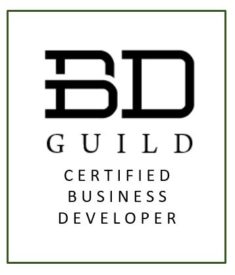 Garrett Terlack from fs3 Hodges hosted The Debrief, the final module of the 2018 CBD program. He came from an entire career of business development in AEC cost estimating, and earned an eventual transition into c-suite leadership as a principal. After everything learned in the past five modules, the debrief is appropriately placed as closure in the business development process. Closure that assists in strategically generating new business, which begins the cycle all over again! To help us understand exactly what the owner is thinking during this pursuit closeout process, Garrett surveyed a group of 30 decision making owners on a variety of selection and debrief preferences, and their feedback is summarized below:
Garrett Terlack from fs3 Hodges hosted The Debrief, the final module of the 2018 CBD program. He came from an entire career of business development in AEC cost estimating, and earned an eventual transition into c-suite leadership as a principal. After everything learned in the past five modules, the debrief is appropriately placed as closure in the business development process. Closure that assists in strategically generating new business, which begins the cycle all over again! To help us understand exactly what the owner is thinking during this pursuit closeout process, Garrett surveyed a group of 30 decision making owners on a variety of selection and debrief preferences, and their feedback is summarized below:
- Not enough detail in proposal
Those on the owner side are generally, proactively trying to make good sense of what you submitted. They are trying to read objectively, ignore common typos, and overall take in the information that is important only. However, when there is a lack of detail in the proposal, a lack of coordination of image to description, and maybe even coupled with low quality photography, they begin to have an even more difficult time holding on to impressionable data, or long lasting positive impact and begin just waiting for the next error or lack of detail. Don’t let a boilerplate, vague approach cause readers at all levels to lose interest.
- Didn’t like certain subs or consultants
It’s easy to make a determination in a very short amount of time, based on physical chemistry alone, whether or not you can tolerate a person for long periods of time. The tough truth is, maybe certain individuals are not right for interview scenarios at all, or need to regularly practice and focus longer and with more determination than other team members. Being honest about all of these things will give you the edge on bringing only the right people to the interview, while knowing how to maximize and minimize the role of subs accordingly.
- Partnerships aren’t justified
Between frequent communications, social media, past project collaboration preferences, and more…a client can tell when you choose a sub or partner based on friendships and not necessarily based in their best interest. This is especially true when the partnerships or need for the additional expense is not clearly justified, and might come off as a scheme between two service providers. Avoid this by clearly justifying partnerships, subcontractors, and all additional expenses proposed at every phase to ensure you’re always working like the money was your own.
- Q & A was awkward
The project manager is the primary interface to the client, and needs to be the most practiced, calculated, calm, approachable, friendly and firm individual on the team. These owners gave feedback that included wishing that the executive or operations director was not the only one polished and practiced, with a positive energy and clear intention behind all comments without hesitation. The PM should have been a bigger and better part of the show.
- PM wasn’t excited
Back to this being a critical consideration, it goes above and beyond being practiced. Genuine enthusiasm for the work to be done should be felt from the PM, a gratitude for the opportunity, and even a collection of forward thinking questions that engage client perception. All of these further differentiate the PM in the pursuit process.
- Too many legal problems
Did you come to the table with an explanation for why the very last project you did in this market fell apart legally? It may be worth considering if a pursuit is worthy all together by asking whether or not there will be a lot of explaining to do. Legal problems can make for uncomfortable conversations with strangers. Current clients with whom you have earned trust are likely better poised to receive business development efforts for a while to bridge the gap between litigation and proven longevity beyond the legal issues.
- Last impression – did they stay in touch no matter what
Win or lose, you must debrief to leave a lasting impression and gain the most value. This group of owners and representatives surveyed mentioned a gracious and grateful debrief as impactful but further, they appreciated follow ups into the future. When the business development roles continued to stay in touch and provide value with information, availability, consistency, etc. they were more likely to invite those firms to bid and ensure they were notified of future opportunities.